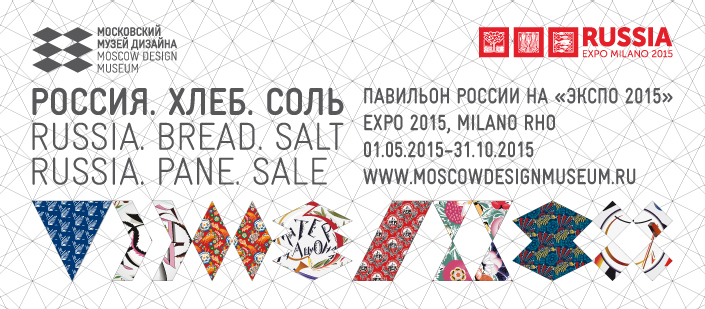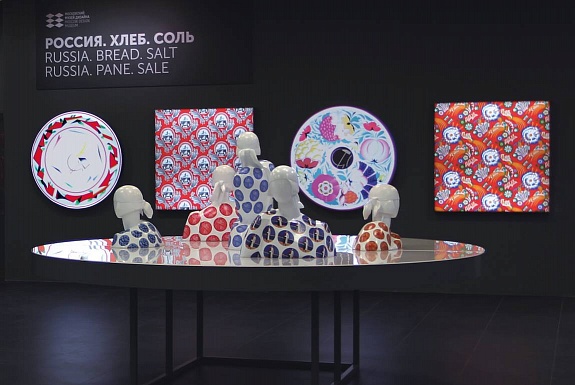New Tretyakov gallery. Krymsky Val 10, West wing. Tue, Wed, Sun 10:00–18:00 Thu, Fri, Sat 10:00–21:00
read more
RUSSIA. BREAD. SALT.
01.05.2015 — 31.10.2015Location: Russian pavilion at EXPO 2015, Milan, Italy
Organized by: Russia Expo 2015, Moscow Design Museum
The exhibition “Russia. Bread. Salt”, organized by the Moscow Design Museum, introduces visitors of EXPO 2015 to Russia’s rich cultural heritage in design, showcasing works by important 20th century masters working with themes of labor and agriculture.
The exhibition is dedicated to the most important movement in Russian art – the Russian avant-garde. The rapid development of industry and agriculture in the first decades of the 20th century together with the romanticized view of free labor inspired Russian artists to create objects of design, such as ceramics and fabrics that featured images of ears and sheaves of grain, sickles and tractors. Today, ceramic plates and fabric patterns celebrating agricultural labor have become rare museum pieces.
In the beginning of the 20th century artists of the avant-garde movement outlined the foundations of the design profession. The motto created by Alexander Rodchenko for VKHUTEMAS (Higher Art and Technical Studios) proclaimed: “Our job today: a mug, a broom, boots, a catalogue... We were artists yesterday – today we are constructors”. He formulated the following guideline for designers: to be a creator that can rationally and practically organize work, home and everyday life. Following this principle artists of the 1920’s became constructors of the “new life”. Constructivism became one of the most utilitarian schools of the Russian avant-garde. It was closely linked with architecture and industry and followed the principle of turning art into production and production into art. The artists-constructors were molding the environment around them, creating the new material world of fabrics, dishware, furniture, clothing, posters, and books. They were guided by principles of a rational search for form and function. To this day works by constructivists continue to inspire designers and architects around the world.
The exhibition presents 1920-30’s textile and ceramic designs created by Lubov Silich, Raisha Vasilieva, Kira Schuko, Darya Preobrazhenskaja, Sergei Chehonin, Alexandra Schektihin-Pototskaja and their famous contemporary Kazimir Malevich. The prevailing motif in their works is the theme of plenty, a romanticized representation of collective labor, machinery, planes and industrial production.
Works by Elena Kitaeva present a contemporary take on the avant-garde. The artist explores the theme of gender equality in the professional sphere. The exhibition features five ceramic figures that are, on the one hand, ‘portraits’ of women-designers like Varvara Stepanova, Lubov Popova, Vera Muhina, and, on the other hand, a model image of a female kolkhoz worker. These works are an ode to labor and creativity, to the contribution made by female designers to Russia’s industrialization and cultural development. Bright geometric compositions of the headscarves and dresses of the figures transport the viewers to a time, when designers wore clothing out of fabrics that they themselves created. These fabrics were not just utilitarian but acted as vehicles for new ideas of the time. For example, decorative sateen titled “Industrialization of the village” with images of tractors collecting the harvest or “Harvester/ Peasant woman” holding ears of wheat. Now they are called propaganda textiles.
The Russian avant-garde is not just an artistic movement - it is a philosophy. Avant-garde artists were ahead of their time and have received international acclaim. Still today, the world continues to be inspired by the ideas and enthusiasm of the pioneers of the Russian avant-garde.









